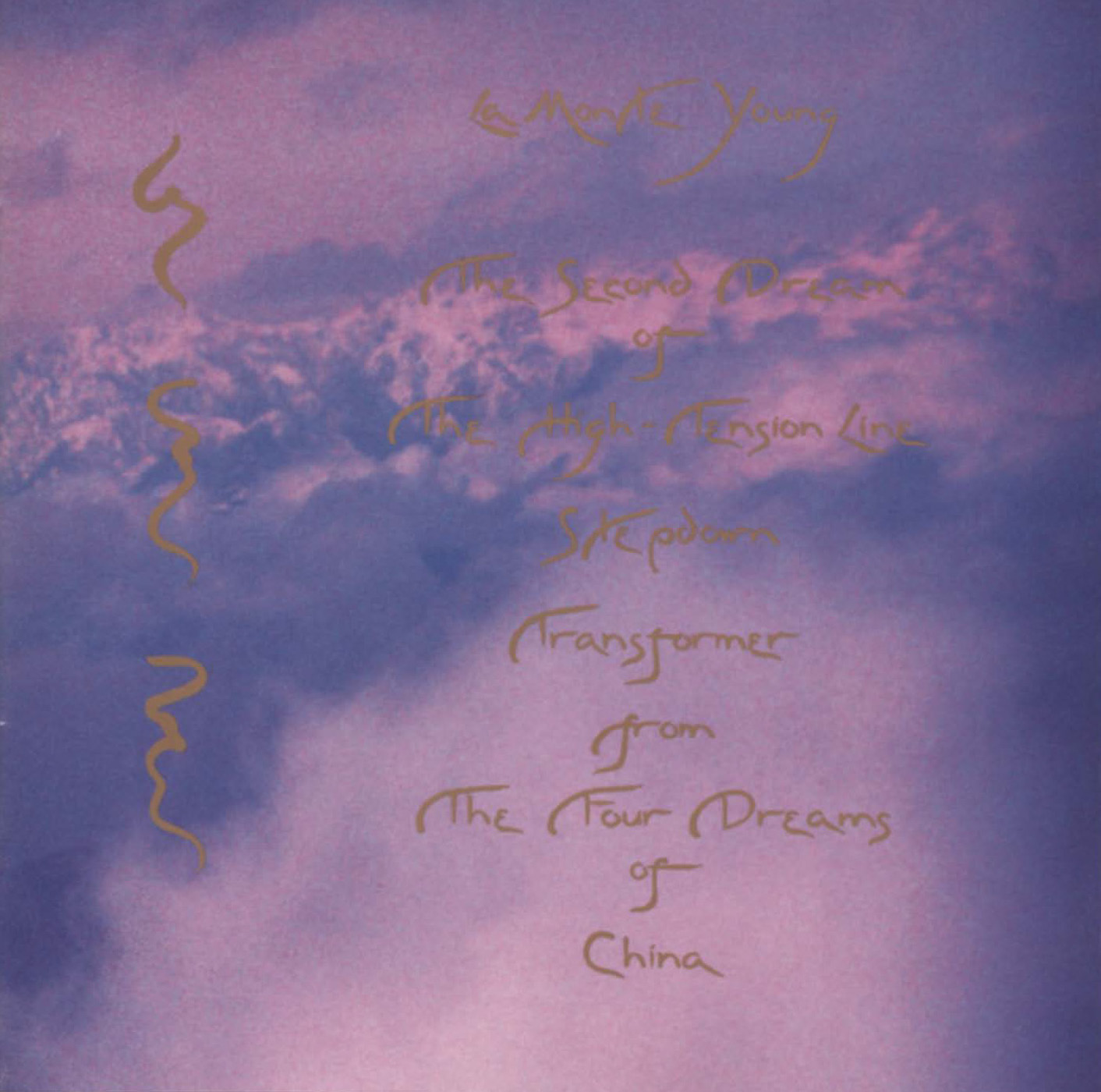
| Artist | La Monte Young |
| Format | Digital |
| Release Date | 1990 |
Composed while riding in a car on a trip from San Francisco to New York City in December 1962, The Four Dreams of China—of which this recording comprises the Second—forms a structural, stylistic and harmonic link between La Monte Young’s earlier, fully notated works composed of long sustained tones from the late ‘50s, and later works combining improvisation with predetermined rules and elements....
Stylistically, The Four Dreams of China continues the texture of long sustained tones and silences, and the extended-duration time construct set forth in his 1958 work Trio for Strings. Structurally, however, while the Trio for Strings is fixed in time by its method of conventional notation, The Four Dreams of China is the first work Young composed in the style of Trio that involves the process of improvisation. Inspired by the scores of Cage, Feldman, Brown, Wolff and Bussotti, which require performer interpretation, Young evolved a concept of composition that led to rule-based scores … and crystallized in The Four Dreams of China. Strict rules in each of the four “Dreams” determine which of the four pitches may be sounded together. Within this framework of fixed rules, the musicians listen to each other and improvise. This process of actively listening to each other is one of the important aspects of The Four Dreams of China, and it has become a central principle for group improvisation in all of my subsequent ensemble music.
Since improvisation is a part of the performance process, each realization of The Second Dream of The High-Tension Line Step-down Transformer is different, and as a method of cataloguing the different recorded realizations of works of this nature, Young includes the date, time and city of recording within the titles. This 77-minute recording is the 9:35 PM, December 9, 1990 realization of The Melodic Version of The Second Dream of the High-Tension Line Step-down Transformer.
The Four Dreams of China represents yet a further expansion of time structure in Young's work: developing on the image of timelessness, Young determined that individual performances of the work had no beginning or ending. Each performance is woven out of an eternal fabric of silence and sound where the first sound emerges from a long silence, and after the last sound the performance does not end but merely evanesces back into silence until a group of musicians “picks up” the same set of pitches again, or from time to time, emphasizing the audible aspect of the performance. It was this concept, in fact, of a work which was eternal, with no beginning and no end, first set forth in The Four Dreams of China, that led Young to evolve the idea of the Dream House, a permanent performance place where such a work would be played continuously, eventually establishing a life and tradition of its own.
An Homage
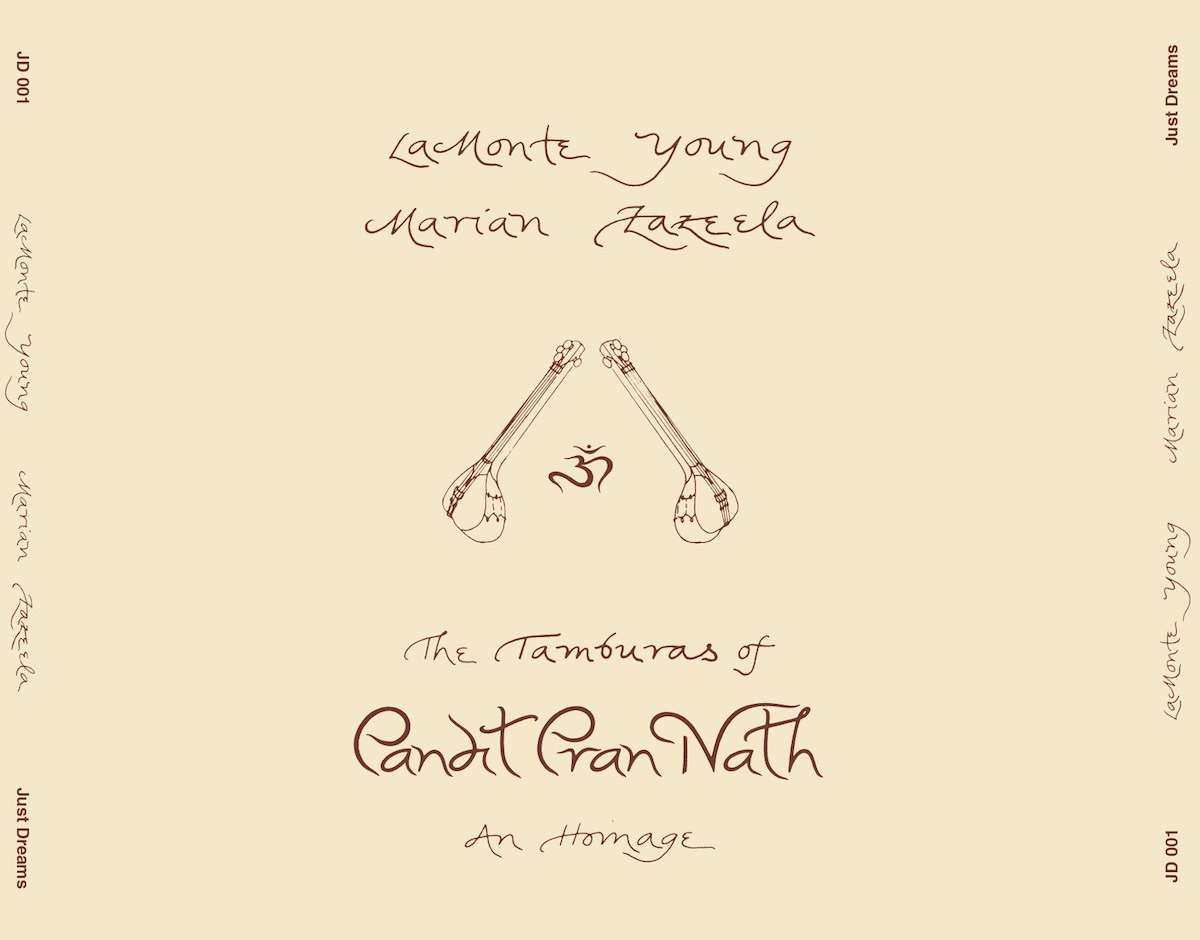
| Artist | La Monte Young & Marian Zazeela |
| Format | CD-Rom / Digital |
| Release Date | 2002 |
The 74 minutes of this recording represent a pinnacle in La Monte Young's recorded tambura tunings, and a miracle of both fate and discipline: for throughout the entire original one-hour recording the frequencies all remained perfectly in tune, a rarity apparent to all those who tune stringed instruments on a daily basis.
"As the tambura tuning on this CD leaves the sanctuary of Indian classical music that created it and goes out into the world, there is no way to control how it actually might be used over time. ... However, in the light of the extraordinary convergence of factors that have brought this tuning into physical manifestation, we now offer it to the world. Each vibration that goes out into the universe becomes a part of, and thus affects, the structure of the cosmic composite waveform. May this recording live on, not only as The Tamburas of Pandit Pran Nath Minus One for all devotees of raga to have a well-tuned, ready drone frequency constant with which to practice the śrutis, but at the same time, for all listeners, as a vehicle in the quest for spiritual attainment and for the evolution of consciousness, an introduction to the study of the universal implications of vibrational structure, and a positive force in the eternal interplay of harmony and discord, of harmonicity and inharmonicity, of good vibrations and bad."
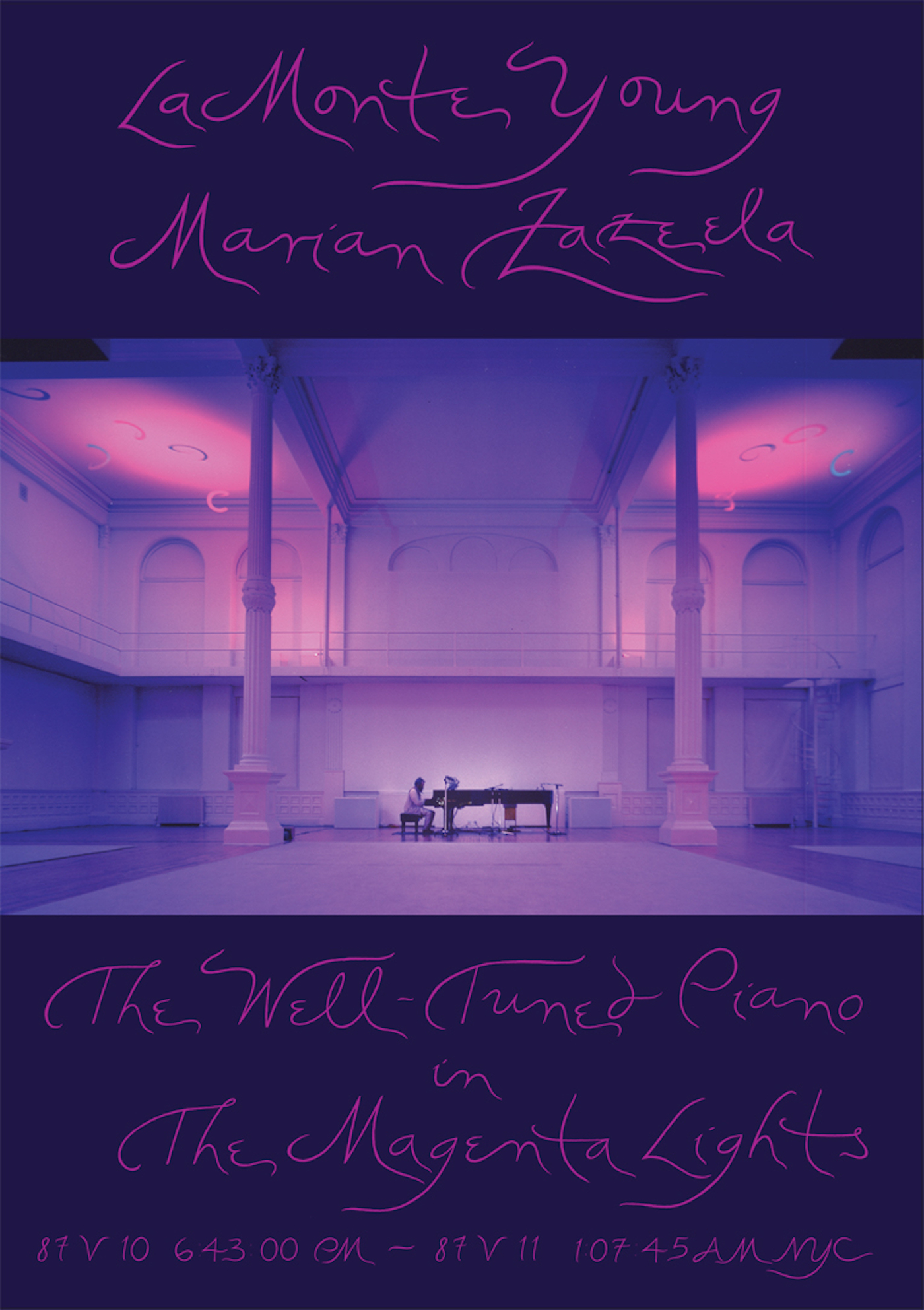
| Artist | La Monte Young & Marian Zazeela |
| Format | DVD / Digital |
| Release Date | 2018 |
La Monte Young's magnum opus, The Well-Tuned Piano is a solo improvised work that he performed live in public over 65 times between 1974 and 1987 in the Marian Zazeela light environment. Conceived in 1964, this work continued absorbing, evolving and expanding for over two decades until it flourished to its full structure in the '80s. ... Each performance was improvised by memory over an interwoven architectural form, which often inspired new material while performing.
During the second decade, the scale of the work had expanded exponentially with a wealth of musical materials built from the organic confluence of both Western and Hindustani classical traditions. The keyboard of Young's Bösendorfer was sometimes stained with blood from his wounded fingers after a long performance. The 45-minute recorded version (1964) had gradually developed to a continuous 6-hour 25-minute virtuoso live performance in 1987. The Well-Tuned Piano is certainly the epitome of a justly tuned piano in the modern context that transcends the character and limitations of the instrument. While deeply rooted in the ancient traditions of aural primacy, tonal structure and modality, The Well-Tuned Piano delineated an unprecedented sustained harmonic resonance and a complex sonic epic that we had never before experienced. The intervallic relationships of numerous themes from The Well-Tuned Piano, The Magic Chord, The Romantic Chord, and The Opening Chord, were later developed and transformed into Young's other original compositions such as Chronos Kristalla, Just Charles & Cello in The Romantic Chord and numerous Sound Environments."
Put succinctly, as Young himself does on p. 17 of the 2018 DVD booklet, "This [recording] captures the most important aspect of my work in composition that I have succeeded in recording to date. It is the yardstick against which all my other work must be compared.
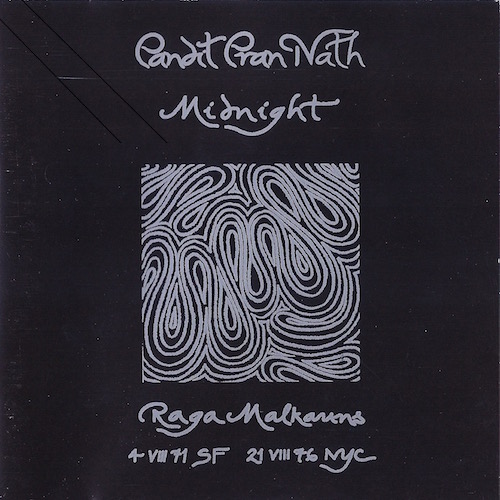
| Artist | Pandit Pran Nath |
| Format | Digital |
| Release Date | 2002 |
Malkauns is considered to be one of the six major ragas in the system of North Indian classical music. According to Pandit Pran Nath, the mood of Raga Malkauns is that of a yogi at night in deep meditation. Imagine Lord Shiva seated on his tiger skin high in the Himalayas, eyes closed, in lotus posture. The powers of darkness send the Asuras (evil spirits) to tempt him, to lure him from his meditation. The mood of the raga is extraordinarily expansive. It must include such elements as: the yogi’s initial meditation; the beguiling enticements of the Asuras; ... the yogi’s eventual conquering and destruction of the Asuras; and his return to all encompassing meditation.
This double CD set was originally released in honor of Pandit Pran Nath’s 84th birthday, November 3, 2002, and is the first recording of his singing on the Just Dreams label. CD 1 features a 1971 recording of a live performance of Raga Malkauns that was one of his most intense and powerful, although technically not so well recorded. CD 2 presents a 1976 studio performance of the same raga and the same compositions that is both well recorded and extremely masterful. Together in one release, the two performances provide a rare opportunity to study, compare and enjoy the range and expressiveness of this great raga and the breadth of musicianship evidenced by the renderings of Pandit Pran Nath.
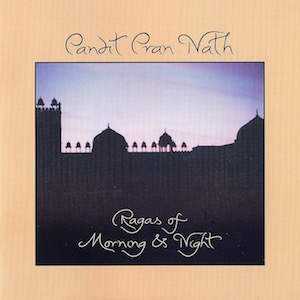
| Artist | Pandit Pran Nath |
| Format | CD-Rom / Digital |
| Release Date | 2002 |
Todi is a morning raga to be performed between the hours of 9:00 AM and 1:00 PM. Pandit Pran Nath describes the mood of this raga as that of the cry of a woman toward God expressing her anguish over life's difficulties ... Musically it is one of the most unique and interesting ragas. The scale is quite unlike anything we have in the West and may be represented roughly as C, Db, F#, G Ab, B, C. Pandit Pran Nath's Darbari in many ways elucidates the quintessence of his style. His specialization in the slow, unfolding of the alap section of ragas finds its perfect union with the deep, resonant tones... , the long graceful arches, and the elegantly architected minarets of Raga Darbari. One sinks deeply into the mood he draws of a late night inner prayer, the yearning of the soul for peace and fulfilment - the longing of the heart for an intuited vision of beauty. Even in India, where many musical moods have been classified, the feeling of Darbari is particularly dramatic. It is the application of the pitches that creates moods in music, and Pran Nath's komal; gha (flat 3rd degree) and komal dha (flat 6th degree) profoundly demonstrate the ability of sound to resonate the nervous system of the listener. His understanding and use of the andolan (controlled sliding back and forth) between the minute shades of the values of these pitches is truly astonishing. Pandit Pran Nath speaks of applying nine types of komal ga in Darbari! The pitches of the komal dha, komal ga, and komal ni (flat 7th degree) are lower than one usually hears in the Darbaris of others and are based on a relationship to the 7th partial, a harmonic emanating from the tamburas. In the West we know this harmonic through its use on the 7th and 3rd degree of the blues.
The land of Kanada, Gopal Nayak, the romance of the Mughal courts, Mian Tansen, classicism, blue notes, imagination, an ancient virtuosic performance tradition handed down for centuries from guru to disciple, Ustad Abdul Wahid Khan, lifetimes of devotion - all these together and more make up Pandit Pran Nath's Darbari, a masterpiece, a gift to our time.
Live at The Kitchen
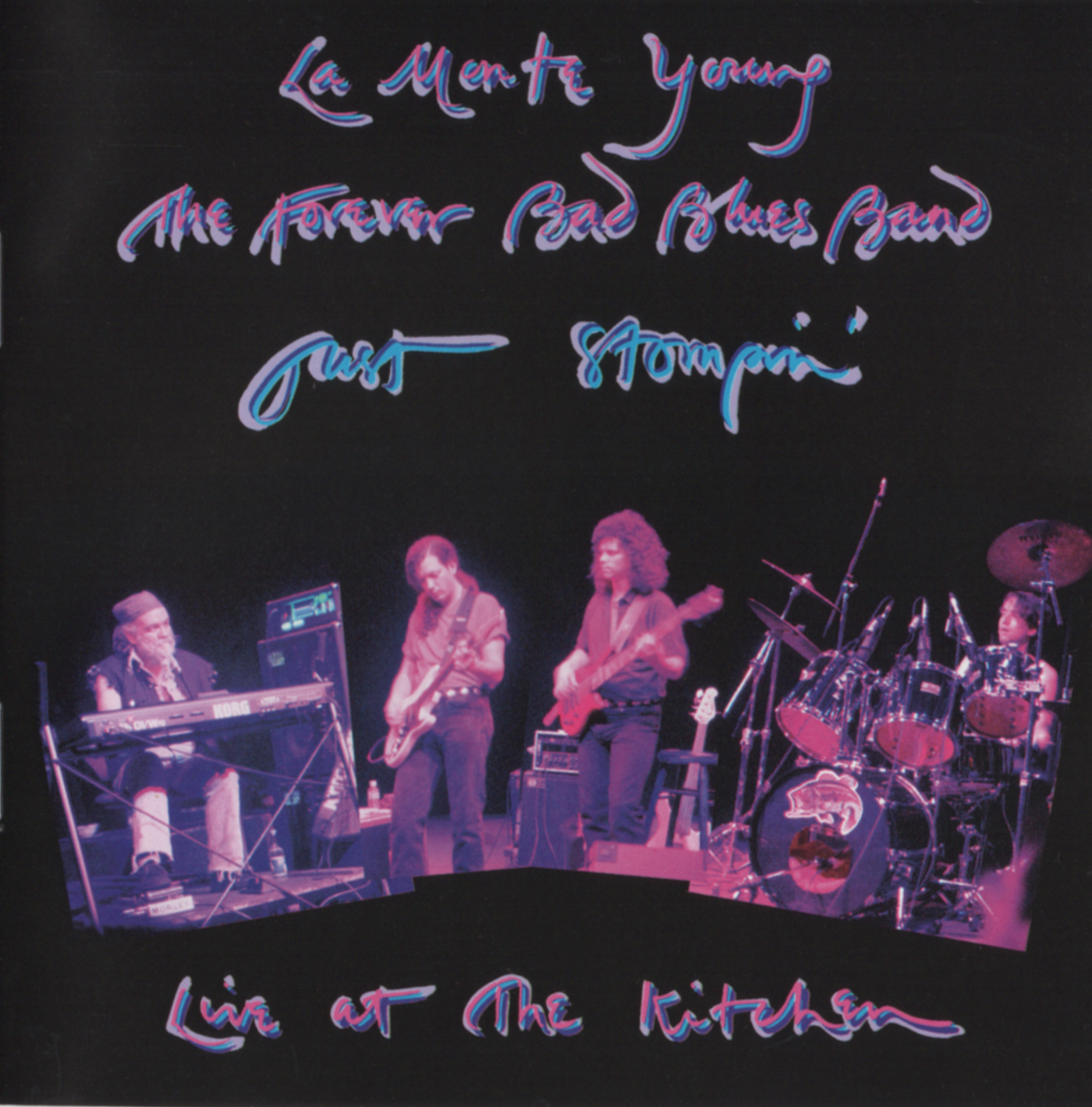
| Artist | La Monte Young & The Forever Bad Blues Band |
| Format | Digital |
| Release Date | 1993 |
The music of The Forever Bad Blues Band represents Young's latest contribution to the ongoing dialogue with his plugged-in rock and roll progeny. Out of Young's early sixties performing group came most of the original lineup of the Velvet Underground, a band that syncretized the sounds of the machine shop and the blues bar and eventually inspired several generations of sonic rockers. In the early eighties... , Rhys Chatham's and Glenn Branca's compositions for massed electric guitars in just intonation became a finishing school for a new breed of rock musicians who went on to challenge the hegemony of equal temperament -Sonic Youth, Band of Susans. These bands, along with a slew of compatriots from the U.S., England and Europe, have been moving from the "alternative" rock ghetto into the mainstream, bringing with them an elaborate lore of non-equal-tempered guitar tunings that ultimately derives from Young's groundbreaking work.
In the Village Voice, Kyle Gann rephrased a statement originally made by microtonal composer Ben Johnston: "One cause of society's problems is that people grow up bathed in loud rock in the usual equal-tempered tuning, and ... the irrational intervals of that tuning create an unconsciously disturbing disharmony in the ear." If that's the case (and didn't Plato say something similar?), then the growing tendency in rock toward a more just/Pythagorean tuning approach is a welcome development indeed. And Young's pioneering, systematic investigation of ancient, non-Western, and other tuning alternatives qualifies as a public service.
Now, with The Forever Bad Blues Band, Young is reminding his rock and roll "children," as well as the rest of us, of the basic blues verities. Looking back over his career as a composer, it's evident that he was zeroing in on the core of the blues experience all along, moving from an early concern with macro-structure (the blues chorus, blues modes) to micro-structure (the microtonal architecture of melodic language and syntax). And this is perhaps the essence of Young's singular contribution to the music of our time: like a sonic archaeologist, he is always digging for fundamental truths. And finding them.
